If you live in Minnesota and drive a car, you know that you are required to have car insurance. When you were purchasing that car insurance, you probably noticed that you were required to purchase personal injury protection (PIP). This is because Minnesota is a no-fault state. When you get into a car accident, your insurance company will pay for your medical bills, regardless of which driver was at fault in the accident. Does this mean determining fault is meaningless? No; if you were seriously injured, lawyers are equipped to help you file a lawsuit to get additional compensation from the insurance company of the at-fault driver. In this situation, experienced attorneys who know how to determine who is at fault in a Minnesota car accident can be indispensable.
The Basics of Determining Fault
When trying to determine who is at fault in a Minnesota car accident, there are effectively two types of accidents: those where neither party is initially assumed at fault and those where responsibility defaults to one party. The latter are good if you are on the right side of them and bad otherwise. These default liability accident types are:
- Rear-end accidents
- Left-hand turn accidents
- Accidents where someone runs a red light
- Accidents that involve someone backing up.
Typically, unless there are exceptional circumstances, a particular driver is assigned guilt in these accidents. In the above-listed accident types, the driver turning left is usually at fault, as is the driver who runs a red light. Attorneys who want to challenge this default assumption will need considerable evidence or conflicting default-at-fault situations. For example, if one driver in an accident turned left legally and the other driver ran a red light, the driver turning left would not be considered at fault by default, because running a red light more definitively puts the other driver at fault.
But not all accidents are this cut and dried. In many accidents, both parties might reasonably be at fault. For example, if two cars get into an accident in an intersection with a four-way stop, it might not be immediately obvious who was at fault. Typically, the driver who arrived first has the right of way. But if both drivers arrive at the same time, the driver on the right has the right of way. In an accident, the driver on the right might claim they arrived at the same time, while the driver on the left claims to have arrived first. Experienced attorneys will interview witnesses, attempt to find camera footage, and possibly even use an expert who can reconstruct accidents to determine which account is accurate.
When It Is Important to Determine Fault
The police and your insurance company may attempt to determine fault after a car accident, but neither party is doing it to help you file a civil lawsuit. The police typically only care about determining fault so that they can give tickets or even potentially charge someone with a crime. Unless they are facing a lawsuit, the insurance company only needs to determine fault to see whether it can legally use the accident as a reason to increase your premiums. But when do you need to know how to determine who is at fault in a Minnesota car accident?
You need to determine fault when the law allows you to bypass the no-fault system and file a lawsuit. This can be done when:
- You have suffered an injury that requires more than $4,000 in medical bills.
- You were permanently disfigured by the accident.
- You suffered a disability that lasted 60 days or more.
- Someone died in the accident.
These circumstances allow you to file a lawsuit that can recover non-economic damages.
Why Determining Fault Matters
Damages You Can Get in a Car Accident Lawsuit
The minimum PIP you are permitted to purchase provides up to $20,000 in medical expense reimbursement and up to $20,000 in income loss reimbursement due to injuries resulting from a car accident. It also pays up to $20,000 of survival benefits should the driver die. But all of these benefits are economic benefits. That means they reimburse the victims for expenses and losses that can be calculated. Did you miss two weeks of work after suffering a burn injury in a car accident? If you are paid $2,000 a week normally, then you will get $4,000 of reimbursement for your lost wages. But an insurance company won’t pay you any money for the mental anguish or physical suffering that you experienced due to an accident.
The only way to get any compensation for your pain and suffering is by suing the driver of the other vehicle for non-economic damages. These damages can’t be documented. Typically, they are calculated as a factor of any economic damages you suffered.
Furthermore, filing a lawsuit against the at-fault driver or making a third-party insurance claim against their insurance company is the only way to get additional compensation after you reach the limits of your PIP.
Partial Benefits Due to Partial Fault
Unfortunately, it is relatively uncommon for someone to be completely responsible for the injuries that another party suffered in an accident. For example, assume for a moment that the other driver was speeding and ran a red light when they hit your car. It seems that they are unquestionably at fault. But that doesn’t mean that they are completely at fault for your injuries. If you weren’t wearing your seat belt, you would be partially responsible for the severity of your injuries. That partial fault limits your ability to get compensation under the Minnesota comparative fault statute.
This statute states that if you are partially responsible for injuries that you suffered, you can still receive compensation. Any compensation a jury awards you is reduced by a percentage equal to the percentage you are responsible for your injury. This is another reason that it is so important to accurately determine fault in a car accident in Minnesota. The insurance company wants to pay as little compensation as possible. It will gather as much evidence as it can find to show that you were responsible for your injuries. Attorneys need to be equally diligent in gathering evidence that supports their clients’ claims.
Determining Fault in Other States
While Minnesota is a no-fault state, that doesn’t mean every state is. Only 11 states are no-fault states. The other 39 have some type of fault rules. For example, in nearby Wisconsin, if you get into a car accident, the insurance company for the at-fault driver foots the bill for both drivers. This means that all of your economic damages will be covered by the at-fault driver’s insurance company up to the limit of that policy.
Determining fault in these states has two benefits. First, it determines which insurance company will pay for losses and expenses. Second, it determines whether you can sue for additional damages, including non-economic damages. Because it affects who pays, both insurance companies will often try to point the finger at the other driver in this scenario. Experienced car accident attorneys can investigate with your best interests in mind.
Contact Tyroler Leonard Injury Law Today
Determining who is at fault in a Minnesota car accident requires an experienced investigator working hand in hand with lawyers who understand the law. That is a combination you can find at Tyroler Leonard Injury Law.
The post How to Determine Who Is at Fault in a Minnesota Car Accident appeared first on Tyroler Leonard Injury Law.




